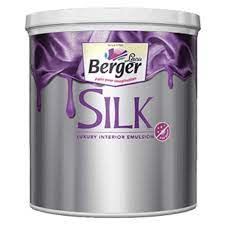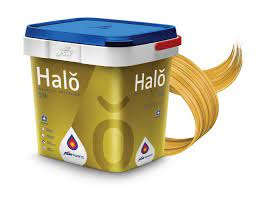Calcutta High Court: While deciding whether the defendant’s use of “SILK” constitutes trademark infringement or is merely a descriptive term in the paint industry, a single-judge bench comprising of Krishna Rao,* J., took into account the distinctive features of each party’s label marks and the absence of fraudulent intent by the defendant and dismissed the petitioner’s application for injunction.
“Upon examining the containers and labels, this Court found that there is no actual similarity between the marks “SILK” of both the plaintiff and the defendant. This Court held that the plaintiff failed to establish deceptive similarity.”
Factual Matrix
In the instant matter, the petitioner-plaintiff, Berger Paints India Ltd., filed an application seeking an injunction to restrain the defendant-respondent from infringing its registered trademark “SILK” by using the trademark “HALO SILK”. The plaintiff, originally incorporated in 1923 as Hadfields India Ltd., has evolved into Berger Paints India Ltd. and has a significant international presence. The plaintiff owns over 250 trademarks in India, including the registered trademark “SILK” adopted in 1980 for paint products. In December 2019, the plaintiff discovered that the defendant, a newcomer in the paint industry, was using the mark “HALO SILK” for its products. The plaintiff issued a legal notice to cease and desist, but the defendant refused to comply. The defendant, a newcomer in the paint industry, has been marketing its products using the mark “HALO SILK”, leading to a legal dispute.
Petitioner’s Contentions
The plaintiff contended that “SILK” has been used since 1980 and has become a highly sought-after brand in the field of paint and allied products. It was contended that the plaintiff conducted extensive promotional campaigns to establish the reputation of its trademark “SILK”. The plaintiff alleged that the defendant’s use of “SILK” in conjunction with “HALO” infringes on its well-known trademark, causing confusion and taking advantage of the plaintiff’s reputation. The plaintiff asserted that the defendant has no right to use the “SILK” mark, as it is the exclusive property of the plaintiff for paint products.
Respondent’s Contentions
The defendant argued that “SILK” on the defendant’s packaging is used to describe the characteristics/quality/finish of its products, not as a trademark. The defendant claimed that the use of “SILK” is industry jargon indicating a mid-shine finish and easy maintenance. According to the defendant, the term “SILK” for paint finish is customary in the trade and not capable of exclusive protection. The defendant challenged the plaintiff’s exclusive rights over “SILK”, citing the lack of statutory or common law support. It was contended that the defendant filed trademark applications for labels in January 2020, specifically for the silk finish variant, which were accepted and advertised by the Registrar of Trademarks.
Moot Point
-
Whether the defendant’s use of “SILK” amounts to infringement constitutes trademark infringement or if the term is merely descriptive and customary in the paint industry?
-
Whether the plaintiff can claim exclusive rights over the term “SILK”?
Legal Provisions
-
Section 2(1)(h) of Trademarks Act, 1999 — ‘deceptively similar’
-
Section 17 of Trademarks Act, 1999 — Effect of registration of parts of a mark
-
Section 29 of Trademarks Act, 1999 — Infringement of registered trademarks
Court’s Assessment
The Court stated that the Trademark protection involves establishing a connection in the course of trade between a manufacturer and their goods, serving as a “badge of origin.” The distinctive nature of a trademark is crucial for distinguishing goods and services, with the primary aim of protecting consumers from being misled. Trademark infringement is assessed by comparing the two marks, focusing on the likelihood of confusion or deception. The Court referred to Durga Putt Sharma v. Navaratna Pharmaceuticals Laboratories, 1964 SCC OnLine SC 14, F. Hoffman La Roche & Co. v. Geoffrey Manner Co. (P) Ltd., (1969) 2 SCC 716, Cadila Health Care Ltd. v. Cadila Pharmaceuticals Ltd., (2001) 5 SCC 73 and Ramdev Food Products (P) Ltd. v. Arvindbhai Rambhai Patel, (2006) 8 SCC 726, emphasising the need to establish deceptive similarity and the potential for confusion.
The Court observed that the principle of trademark dilution, though not explicitly mentioned in the law, is recognized to protect well-known trademarks from losing their distinctiveness due to unauthorized use in connection with dissimilar goods. The Court highlighted the distinct requirements for infringement under Section 29(1) and (2) and dilution under Section 29(4), emphasising the importance of protecting well-known trademarks from losing their distinctiveness.
The Court observed that Section 29(4) of the Trademarks Act, 1999 addresses trademark dilution, specifically for dissimilar goods or products. The Court relied on the principles established in Daimler Benzaktiegesellschaft v. Eagle Flask Industries Ltd., 1993 SCC OnLine Del 604, to emphasise the importance of preventing dilution for marks that have achieved global recognition. The Court noted that unlike infringement actions for similar goods, Section 29(4) does not require a likelihood of confusion. The Court observed that to establish trademark dilution, the plaintiff must prove:
-
Identity or similarity of the marks,
-
Reputation of the senior mark in India,
-
Use of the impugned mark without due cause, and
-
Unfair advantage or detriment to the distinctive character or reputation of the registered trademark.
Referring to Canon Kabushiki Kaisha v. Metro Goldwyn Mayer Inc., 1999 RPC 117, the Court emphasised the need to assess the likelihood of association between conflicting marks, even in the absence of direct or indirect confusion.
The Court emphasised the need for the plaintiff to establish that their mark has a reputation in India, and that the use of the defendant’s mark is without due cause and detrimental to the distinctive character or repute of the registered trademark. The Court noted the absence of a presumption of infringement under Section 29(4), and stated the plaintiff must prove each element of dilution.
The Court noted that the plaintiff asserted the deceptive similarity based on the use of “SILK” by the defendant and on the other hand, the defendant asserted that “SILK” is used merely to describe the paint finish, i.e., as a customary term in the paint trade and not as a trademark.
Taking into account the defendant’s contention that the plaintiff’s registrations for “SILK” included disclaimers, limitations, and conditions, making them distinguishable from the present case, the Court analysed Khadim India Ltd. v. Lifestyle International (P) Ltd., 2015 SCC OnLine Cal 3866 and Parakh Vanijya (P) Ltd. v. Baroma Agro Product, (2018) 16 SCC 632 and considered the significance of disclaimers and limitations in trademarks.
The Court noted that “products of the defendant are sold under the mark “HALO”, such as, with the word “Silk” being used only to define the finish/sheen of the paint.” The Court examined the label marks, containers, and packaging and found no actual similarity between the marks as the “the packaging, shape of container and the colour scheme of the products of the plaintiff and the defendant are completely different”. The Court held that the plaintiff failed to establish deceptive similarity and denies the injunction.
Court’s Decision
The Court dismissed the plaintiff’s application for an injunction, citing the lack of deceptive similarity between the marks and emphasizing the descriptive nature of the term “SILK” in the paint industry. The Court found no infringement and refuses the injunction sought by the plaintiff.
[Berger Paints India Ltd. v. JSW Paints (P) Ltd., 2023 SCC OnLine Cal 4949, order dated 12-12-2023]
*Judgment by Justice Krishna Rao
Advocates who appeared in this case:
Mr. Surajit Nath Mitra, Sr. Adv., Mr. Sayantan Basu, Mr. Sourav Sengupta and Mr. Amain Baid, Counsel for the Petitioner-plaintiff
Mr. Ranjan Bachawat, Mr. Debnath Ghosh, Ms. Vaibhavi Pandey, Mr. Shounak Mitra, Mr. Salfiqar Ali, Md. Zulfiqar Ali Al Quaderi and Ms. Shivangi Thard, Counsel for the Respondent-Defendant








